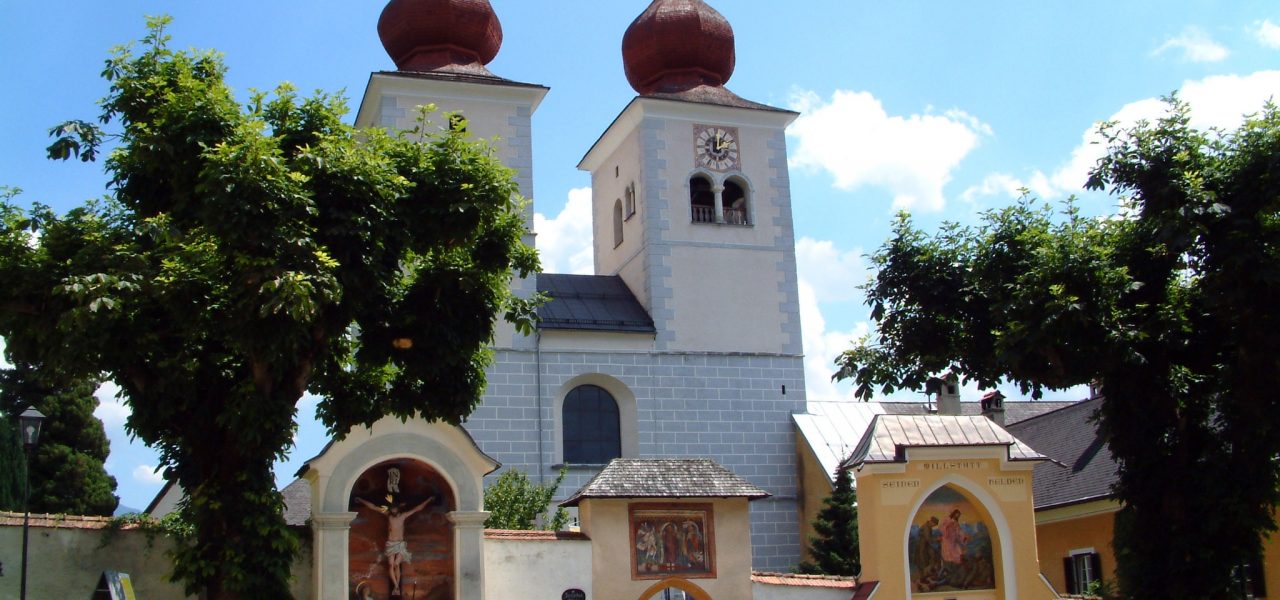INTRODUCTION
Millstatt Abbey is a former monastery in ´Millstatt am See ́ in Austria. The collegiate church and the Millstatt cloister are among the most representative Romanesque buildings in Carinthia, primarily due to their abundant animal symbolism.
For centuries, the monastery was the spiritual and cultural centre of Upper Carinthia. With its possessions around Lake Millstatt, in the Görtschitztal, in Friuli and Salzburg, it was one of the most important in Carinthia. The church is a Romanesque pillar basilica, which initially had a flat ceiling.
HISTORY
The Millstatt Abbey is a foundation of the brothers Aribo II, a former Count Palatine, and Poto (also Boto) from the Bavarian Aribonen. A founding document has not been received; the year of foundation can only be speculated. A tradition note mentioned a legal transaction of Aribo with Archbishop Gebhard of Salzburg, including the Tehent for Aribos two churches in Millstatt (Millstatt location).
Aribo and Poto are also referred to as founders in the Millstatt Book of the Dead from the 13th century.
The first documented abbot is Otto I, who was active from 1122/24 to 1166 and was previously before the convent Admont. In 1122, the Count Palatine Engelbert, a brother of the first Count of Gorizia, Meinhard I, put the monastery under the protection of the Pope. The abbots Otto and Heinrich II (1166 to after 1177), appointed from the Admont Reform Monastery, brought Millstatt to be economical as well as cultural importance, which was to last until the 15th century. During this time, there was a significant scriptorium in pen, in which numerous manuscripts have arisen, including the Millstätter manuscript.
In the four centuries of Benedictine rule in Millstatt until the end of the 15th century, the monastery had 33 documented recorded Abbots. They were also the secular lords between Lieseregg and Turrach.
ARCHITECTURE AND FURNITURE
Finds of individual wickerwork stones and relief plates speak for a Carolingian church founding already in the late 8th or early 9th century. Neither the date of their establishment nor their shape and location could be to this day. Also from the first Romanesque Benedictine monastery, which was built around 1070 or soon after that, no secured remains can be seen. However, it is clear that in the second half of the 11th century, before the construction of the monastery, in Millstatt already existed two churches, which were owned by Count Palatine Aribo II. As the construction phase for the successor building of the Aribonic Monastery Church, the period from 1122 to 1200 is assumed. The Domitian Vita, recorded by the first Abbot Otto reveals that the nave, completed in the east with three apses, was erected after a devastating fire. The second Abbot of Millstatt, Heinrich I, had his builder Rudger attach a massive, initially open porch with a pair of towers to the church on the west side. Around the year 1170, the Romanesque gate with the gemstone was built. As part of the rebuilding of the church and monastery under Abbot Otto I (1122/24 – 1166), the cloister was built, which, like the leading portal of the collegiate church with its sculptural sculptures, is one of the most important Romanesque monuments in Austria.
In 1469, the St. George’s Knights took over the monastery. The most important task was the development of the pin system to a fortress. They built a religious palace west of the old monastery building, which includes a two-storey arcade courtyard. Also, the four towers were built, of which two each were constructed on the west side of the newly built castle and the front of the monastery in the south. Two relief stones with the coat of arms Siebenhirten and the year 1497, which were attached to the first floor of the southern front of the Stiftshof, indicate the year of completion of the construction works.
A significant event for the Millstatt Jesuit residence was the massive earthquake with almost three weeks of aftershocks in 1690. The repair of the earthquake damage took four years and required extensive renovations of the collegiate church and the religious buildings. To date, the damage to the tympanum, which was plastered between 1691 and 1878, but especially on the architrave recognizable. This marble bar, broken into four pieces, no longer supports the relief but is held by it utilizing iron clamps.
OPENING HOURS
June – September
10am – 4pm
CONTACT
Verein Stiftsmuseum Millstatt
Stiftsgasse 1
A-9872 Millstatt am See
Email: info@stiftsmuseum.at
Tel. +43 (0)4766 – 2021
ENTRANCE FEES & GUIDED TOURS
Adult | groups of more than 15 persons: 3,90 € | 2,50 €
Children (age 6-15), Apprentice, Student: 2,50 €*
A group with a state-certified tour guide: 1,50 € (price for the guide depends on the size of the group)
For visitors with the `Millstätter See Inclusive Card` and members of the association Stiftsmuseum Millstatt, admission is free.
Group tours on request (also possible outside opening hours).
TOURIST INFORMATION OFFICE
Marktgemeinde Millstatt am See
Marktplatz 8
9872 Millstatt am See
Tel. +43 (0)4766 – 2021
Fax +43 (0)4766 – 2021-20
gemeinde@millstatt.at


